Are you looking to reduce your oil consumption? Baking and cooking without oil is easier than you think! Learn about the best techniques, tools and recipes in our complete guide.
If you want to cut back on your fat consumption or focus on whole food plant-based fat sources like nuts, seeds and avocadoes, here’s how to cook without oil!
There are many easy ways to make food taste delicious even without pouring olive oil or sesame oil over it — just check out our vegan cooking tips for beginners.
While there is little doubt that a reasonable amount of olive oil or vegetable oil is good for you, the extra calories can add up quickly!
Oil is the food with the highest calorie density and while it keeps our food from sticking to the pan or grill, some people like to avoid it altogether.
Find out what awaits you when you ditch cooking oils and what cooking techniques to use instead.
This post contains affiliate links. As an Amazon Associate we earn from qualifying purchases.
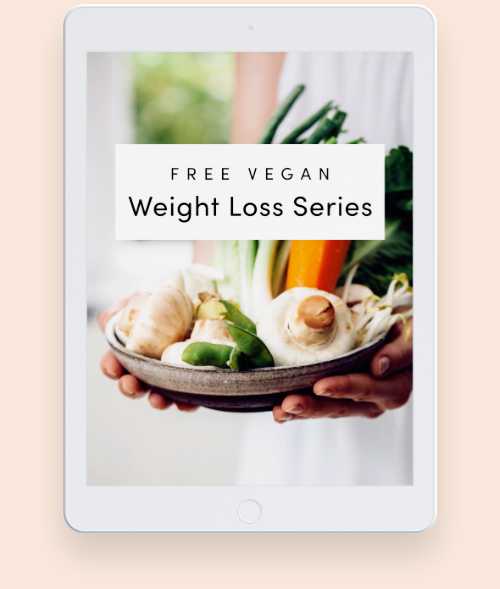
free weight loss email series
Getting lean while feeling full? Yes, that’s possible! Find out about easy food swaps, calorie density and 3 full days of eating for sustainable weight loss.
Benefits of cooking without oil
- Cleaning pans & pots becomes much easier
- Reduce calories by swapping oil for other foods
- Taste the flavor of your food more directly
- Oil-free plant-based diets help with weight management
- Reduce food cost (some oils can be very pricy!)
- Whole foods have more nutrients than oil
We don’t advocate that you cook and bake without any fat like peanut butter or sesame seeds, nor that you stress about small amounts of oil in your dish!
Especially when eating out, it’s nearly impossible to eat oil-free vegan meals — so just focus on what you do in your own home.
Kitchenware suggestions
If you want to cook without (or with less) oil, it’s a good idea to invest in a few high-quality kitchen tools.
- Non-stick pans or skillets
- Wok or cast-iron skillet
- Steamer
- Parchment paper
- Silicone baking mat
- Silicone bakeware
- Air-Fryer
How to sauté without oil
The most common way to cook without oil is sautéing or stir-frying. There are many easy and delicious swaps for this method:
- Soy sauce or tamari
- Vegetable broth
- Water
- Balsamic vinegar
- Cooking wine
We usually start with a splash of water to soften the veggies a bit, then add 1-2 tablespoons of more flavorful oil replacements like soy sauce or vinegar.
A non-stick pan goes a long way here and you need to stir your veggies constantly so that they don’t burn!
If you cook with mushrooms or onions, they typically release quite a bit of water, so you need to add less liquid.
Check out these recipes to see oil-free cooking in action!
How to replace oil in baking
Vegan baking can be tough enough — but if you also want to bake without oil and copious amounts of sugar, it’s time for some next-level tips!
Oil is typically used to bind ingredients and hold moisture in baked goods. Here’s what to go for instead:
- Applesauce
- Pumpkin puree
- Mashed banana
- Coconut milk
- Pureed beans
- Shredded carrot or zucchini
- Silken tofu
- Vegan yogurt
- Almond flour
- Nut butter
- Seed butter
Don’t forget to use parchment paper or silicone bakeware, so you don’t have to grease anything!
Check out the recipes below for some oil-free vegan baked goods.
How to fry without oil
If you’re in the market for a new kitchen tool, we highly recommend that you invest in an Air Fryer!
There are pretty budget-friendly models that enable you to create crispy oil-free fries, tofu, veggies and so much more.
However, if you want to “fry” your food in the oven or a non-stick pan without using any oil, coat them in delicious breading. This ensures a nice crispy outside, although it’s not the same as deep-fried!
Oil-free roasting
If there’s one way to make veggies taste fantastic, then it’s roasting them in the oven to caramel-y, crispy perfection!
This also works with beans or chips, by the way. Creating crispy food without any oil depends on the food in question!
As a rule of thumb, add some moisture to the food first. This can be vinegar, lemon juice, veggie broth, aquafaba (chickpea liquid) or maple syrup.
Next, add your dry seasonings like salt, pepper, paprika, herbs or nutritional yeast!
Sometimes, you don’t even need to add seasonings or liquids and can just dry-roast your food — this is especially true for pumpkin or sweet potatoes.
Arrange in a single layer on your parchment paper-lined baking sheet and watch it closely, so it doesn’t burn.
Another tip is to steam your veggies before roasting them in the oven.
Get inspired by these recipes:
Sauces & dressings
Wait, what? Oil-free cooking includes making salad dressings, sauces and dips without any oil, too?
Sure, this is totally possible! Why stop at sautéing or roasting if you can make a few healthy food swaps for your condiments as well?
While fat is important for a nice mouthfeel and the absorption of certain nutrients, you can create creamy sauces by using other ingredients than oil.
Our favorites include:
- Silken tofu
- Avocado
- Hummus
- Tahini
- Almond butter
- Yogurt
- Cannellini beans
- Cornstarch or arrowroot powder
Check out the following recipes for more!
Tips & takeaways
We hope you found these ideas for oil-free cooking and baking helpful and that you feel equipped to follow some of the tips and recipes in your own kitchen!
No matter why you want to reduce your oil consumption, don’t stress about it too much and take things step by step.
You can start by just using less oil to get used to a lower fat content in your meals. If you haven’t already, begin by transitioning to a vegan diet first and then evaluate your oil consumption!
More vegan cooking guides
We make plant-based eating a breeze! Check out the following articles for more tips.
- How to make Spiralized Veggies
- How to Make Bliss Balls
- Vegan Breakfast Guide
- Vegan Meal Planning Tips
- Instant Pot Beginner’s Guide
Are you currently cooking without oil and what are your favorite tips from this article? Let us know in the comments below, check out our printable recipe and Pin this article here.
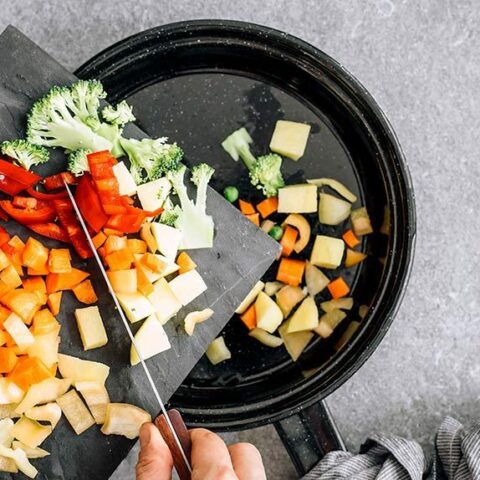
Best Oil-Free Cooking Tips + Recipes
Are you looking to reduce your oil consumption? Baking and cooking without oil is easier than you think! Learn about the best techniques, tools and recipes in our complete guide. The following oil-free veggie sautée perfectly exemplifies how to make this way of eating easy and tasty.
Ingredients
Oil-Free Veggie Sautée
- 1 cup button mushrooms, sliced (70 g)
- 1 cup broccoli florets (90 g)
- ½ red bell pepper, sliced
- 2 green onions, sliced
- Salt and pepper to taste
- Stir-fry sauce
Instructions
- Heat a non-stick skillet over medium-high heat and add 3 tablespoons of water, mushrooms and broccoli.
- Sautée for 3 more minutes while stirring frequently, then add stir-fry sauce.
- Cook until bubbly, then add bell peppers and stir-fry for 5 more minutes. If needed, add more water to keep the veggies from sticking!
- Just before everything is softened and still crunchy, add the green onions. Mix with a spatula to combine, then serve warm over rice or noodles!
Notes
- Instead of the pre-made stir-fry sauce, you can add soy sauce, lemon juice and red chili flakes to the skillet while sautéeing.
- You can use any veggies of your choice and add tofu, tempeh or chickpeas for some protein.
Nutrition Information:
Yield: 2 Serving Size: ½ recipeAmount Per Serving: Calories: 75Total Fat: 1gSaturated Fat: 0gTrans Fat: 0gUnsaturated Fat: 0gCholesterol: 0mgSodium: 855mgCarbohydrates: 14gFiber: 5gSugar: 5gProtein: 6g
Nutrition information is a rough estimate calculated automatically, their accuracy is not guaranteed. Just focus on whole plant-based foods and eat until satiety!

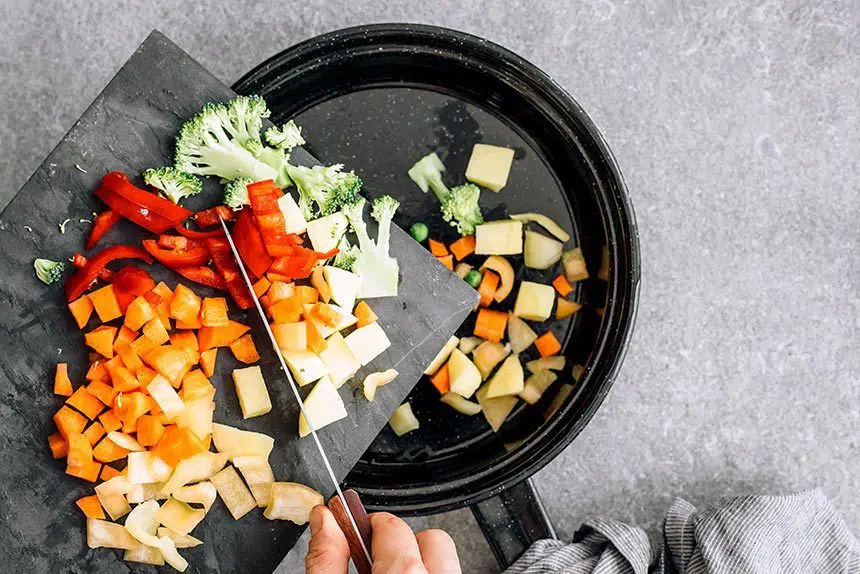
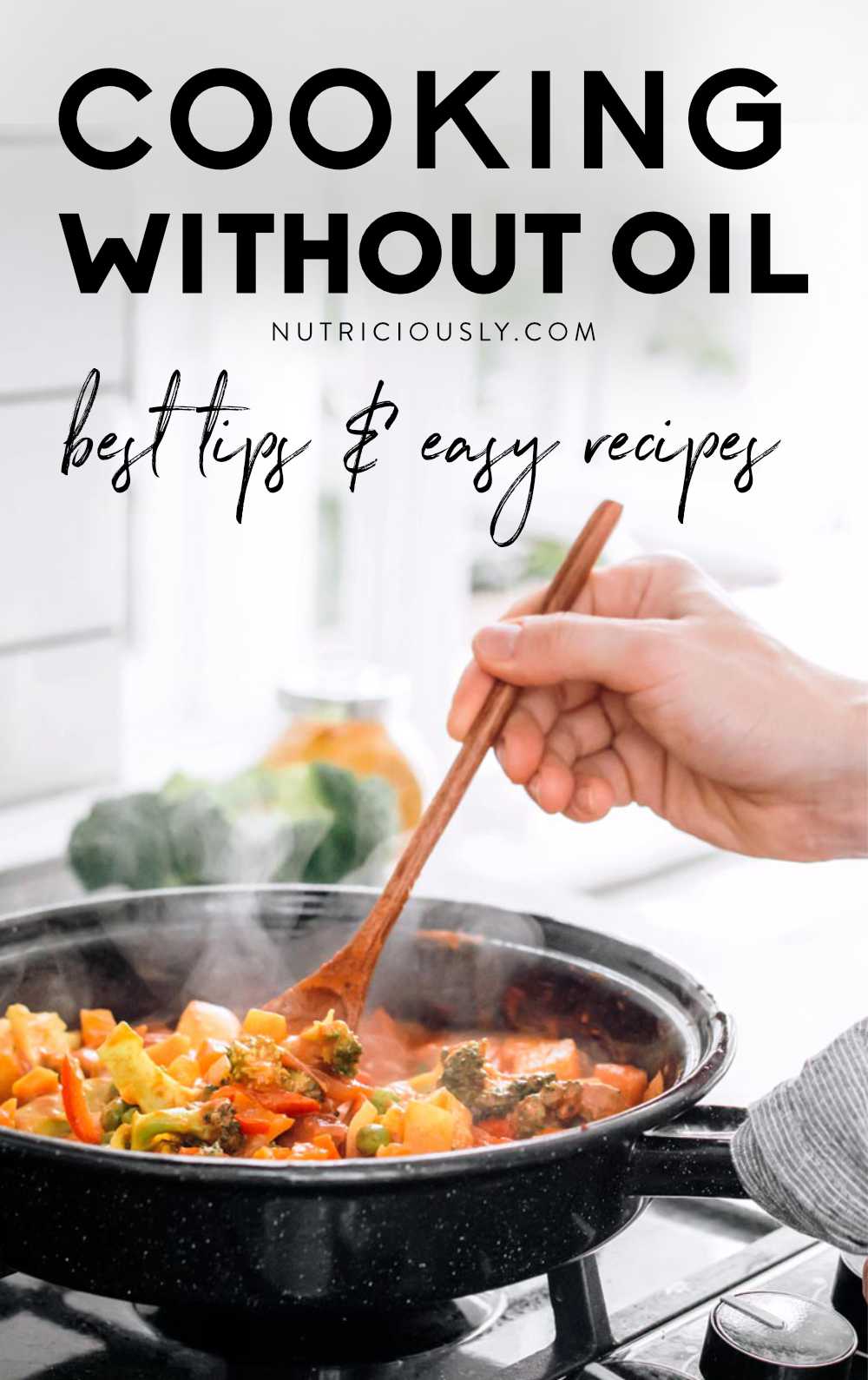
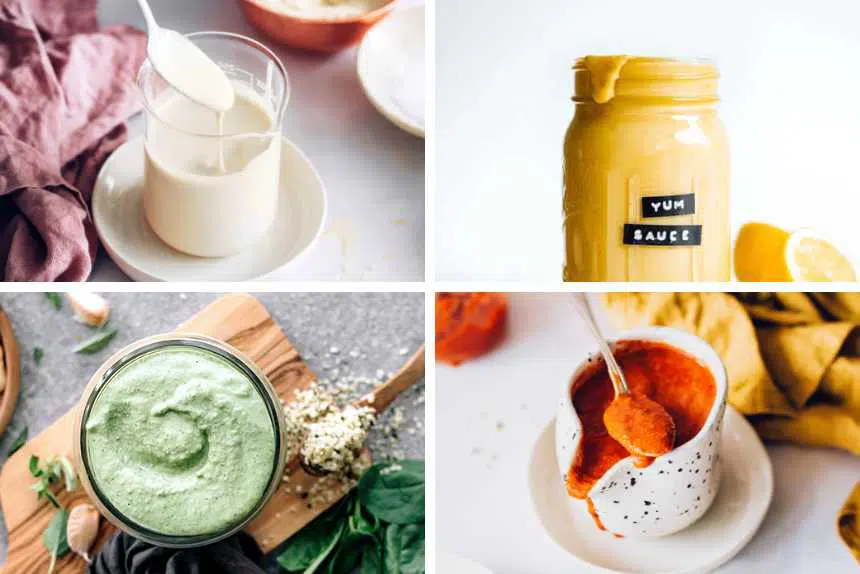



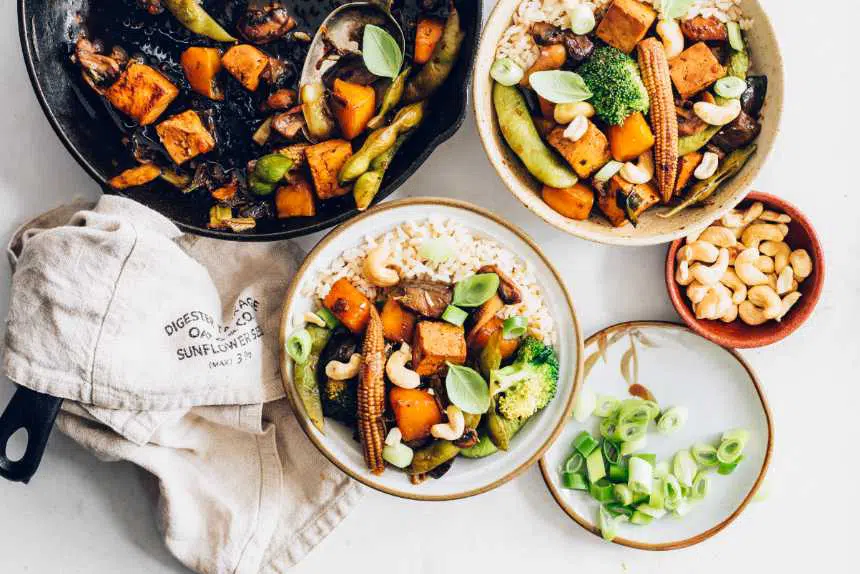
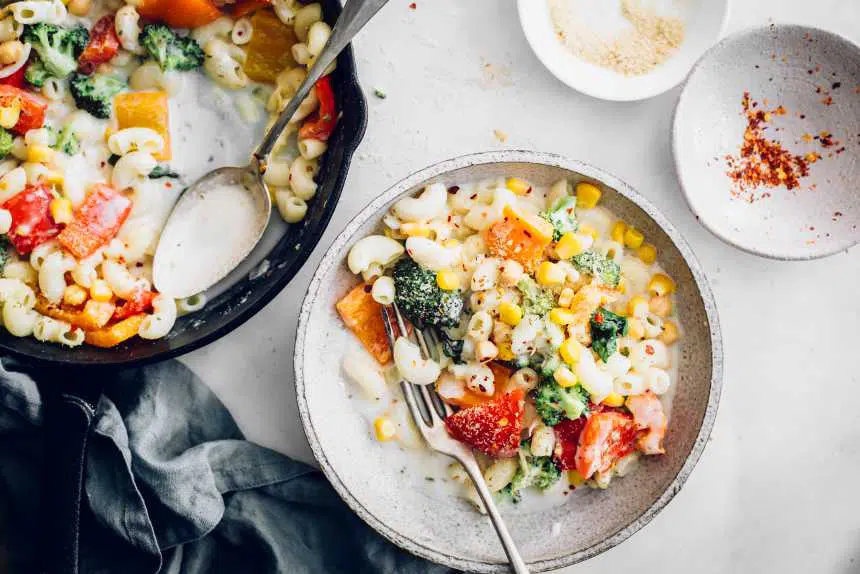
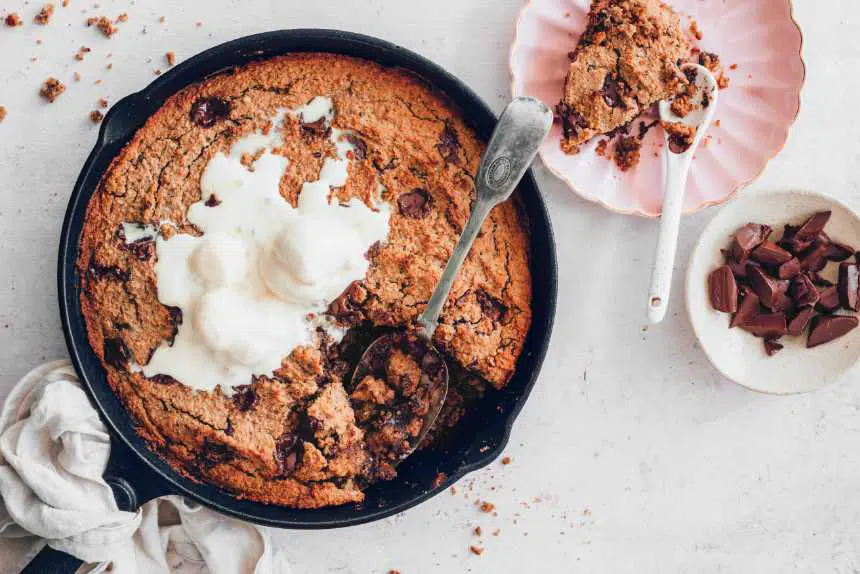
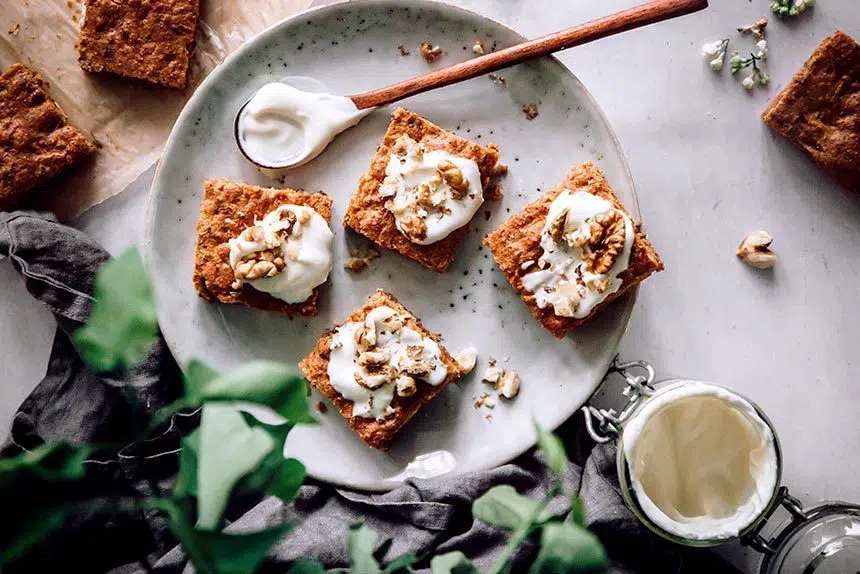
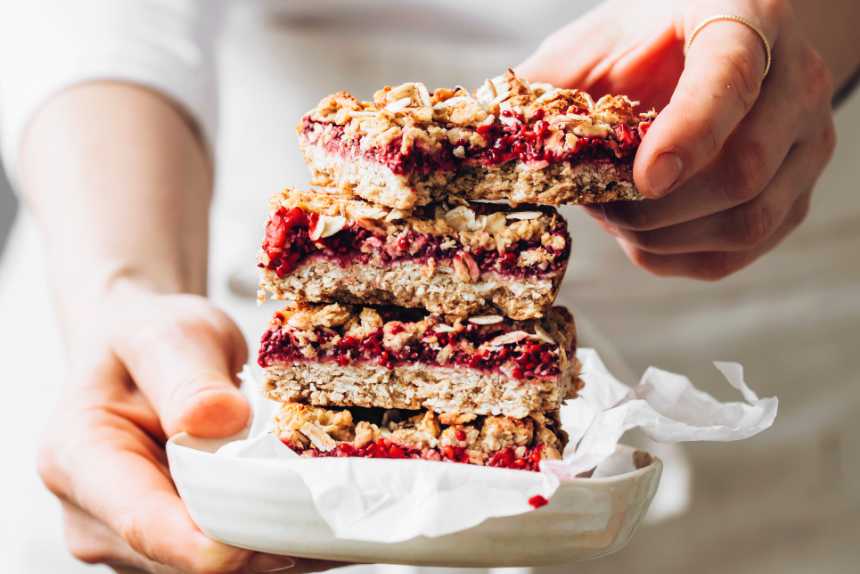
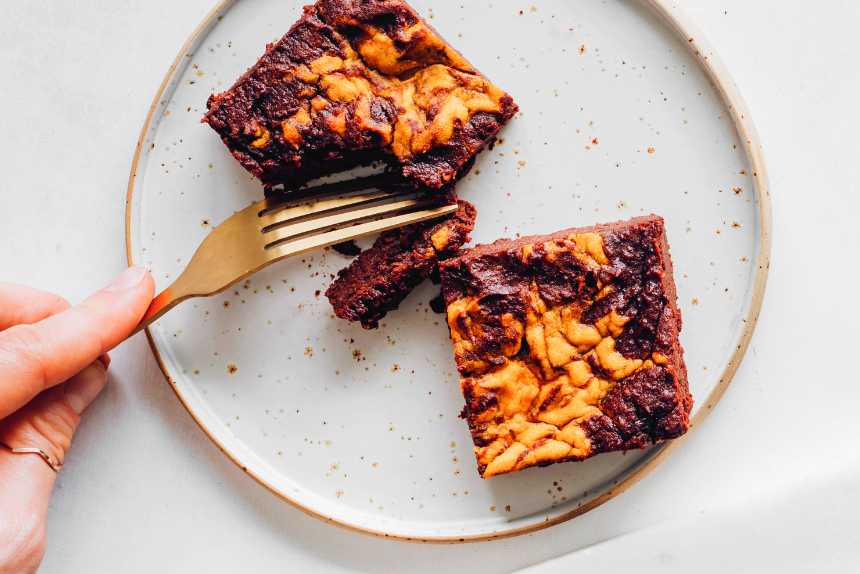
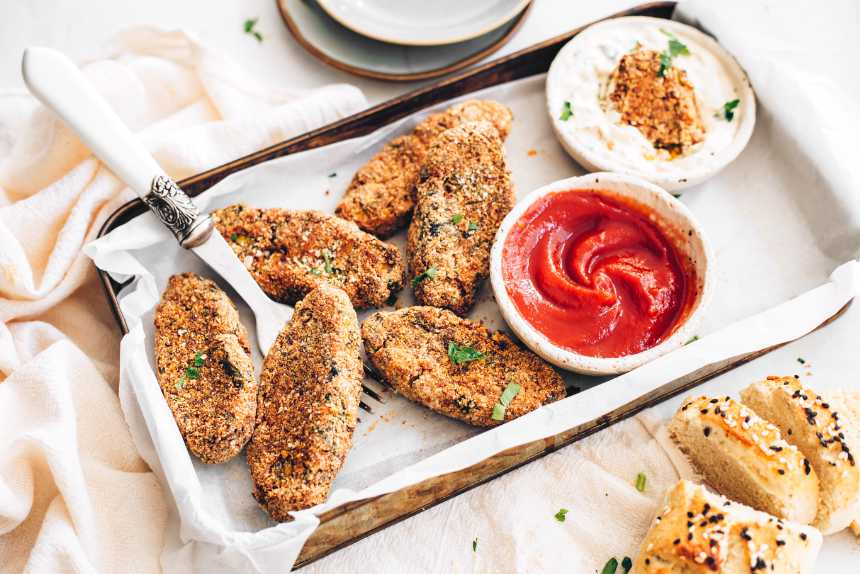
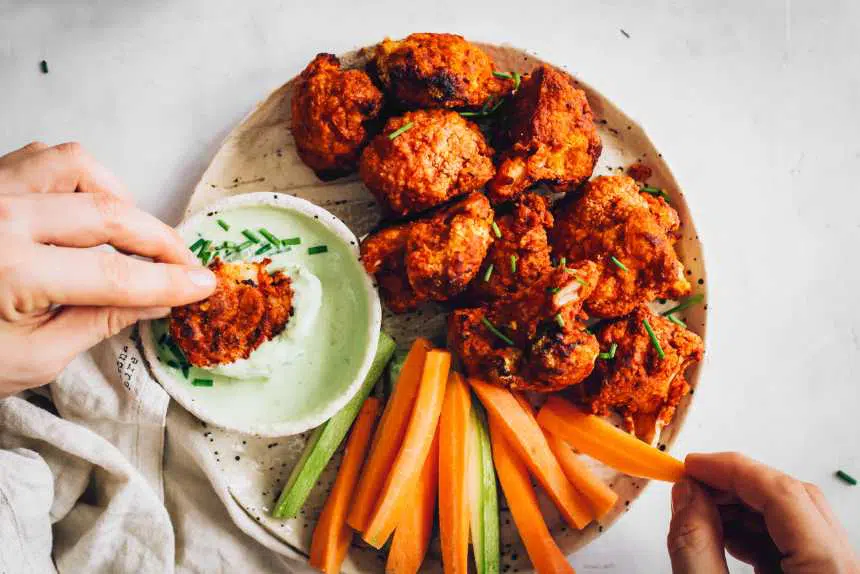
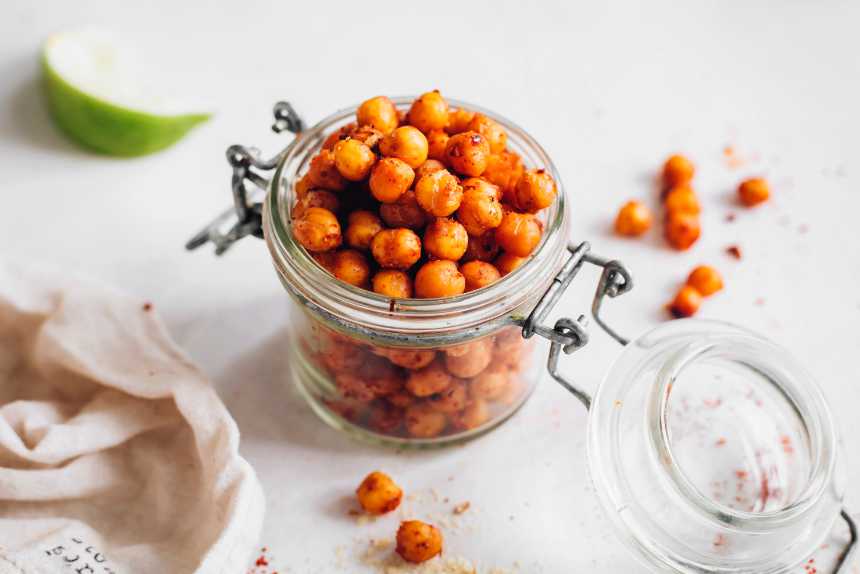
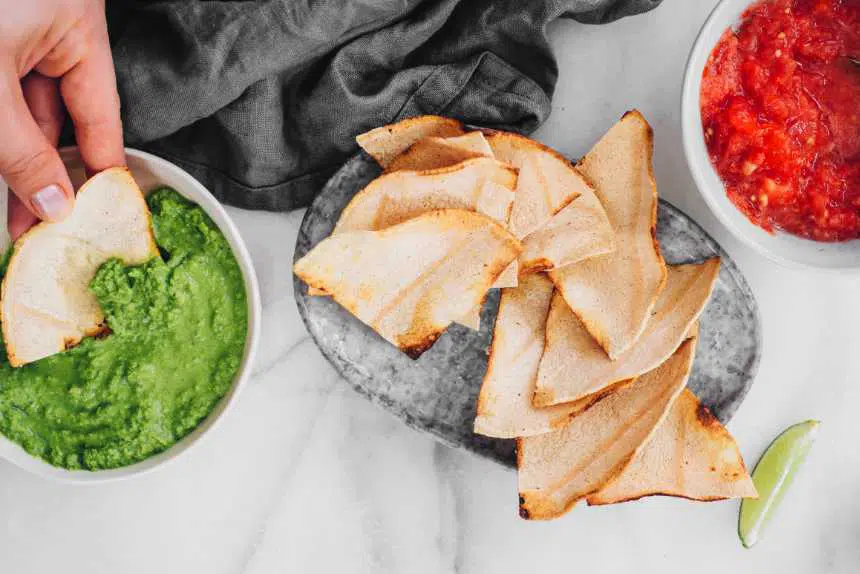
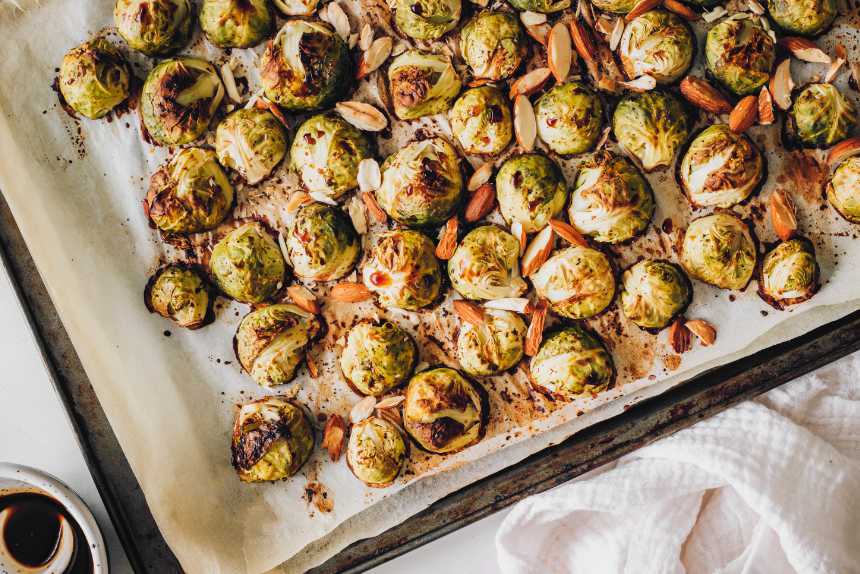
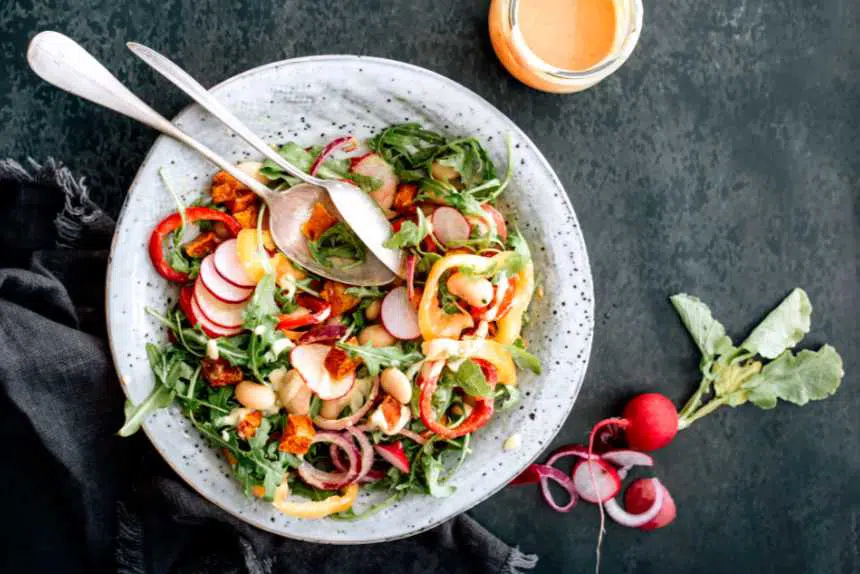
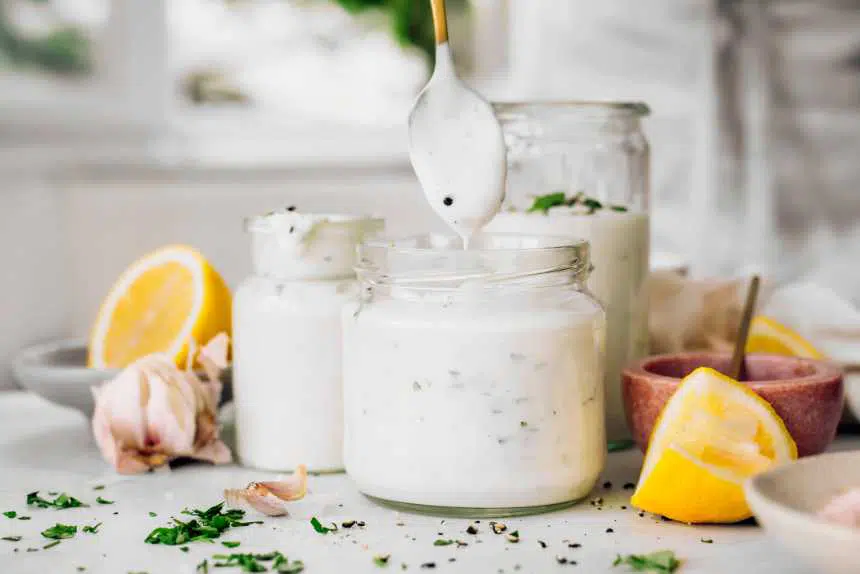
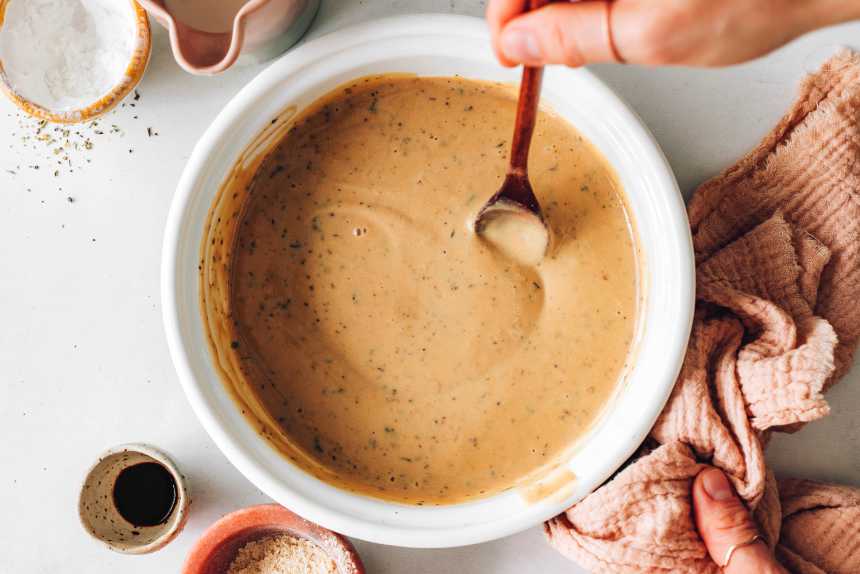
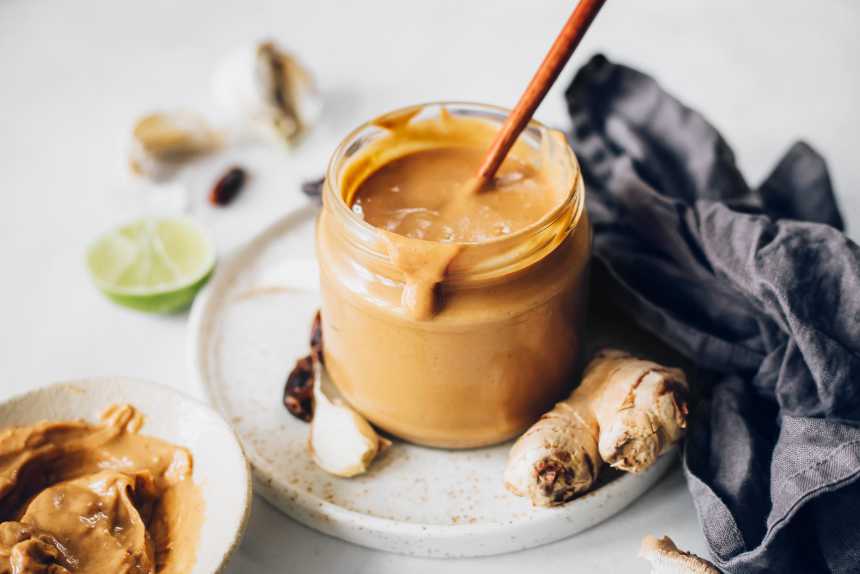
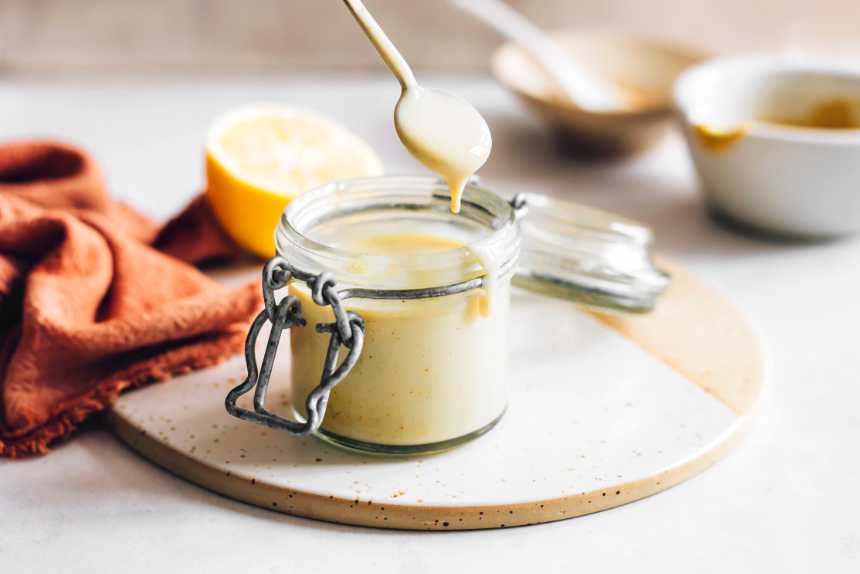
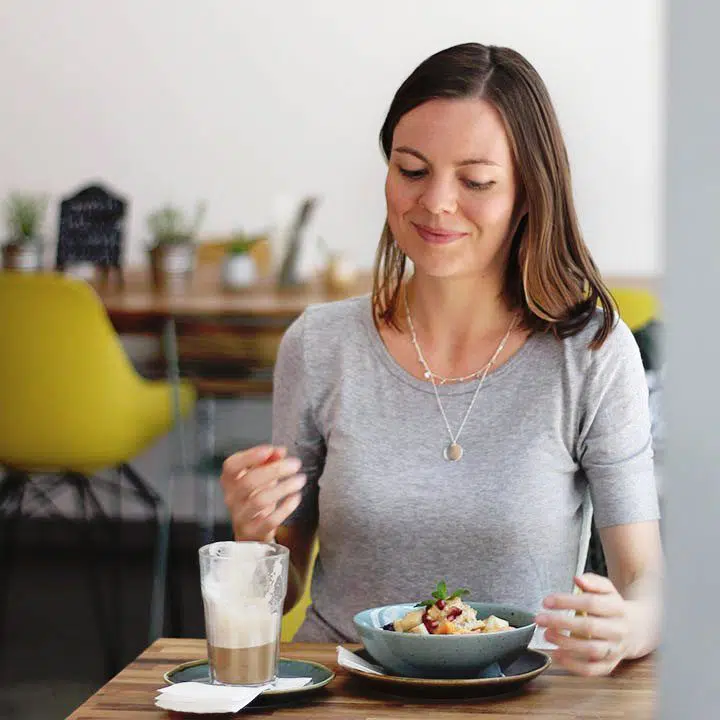
 Alena Schowalter is a Certified Vegan Nutritionist who has been a vegetarian since childhood and vegan since 2012. Together with her husband, she founded nutriciously in 2015 and has been guiding thousands of people through different transition stages towards a healthy plant-based diet. She’s received training in the fields of nutrition, music therapy and social work. Alena enjoys discussions around vegan ethics, walks through nature and creating new recipes.
Alena Schowalter is a Certified Vegan Nutritionist who has been a vegetarian since childhood and vegan since 2012. Together with her husband, she founded nutriciously in 2015 and has been guiding thousands of people through different transition stages towards a healthy plant-based diet. She’s received training in the fields of nutrition, music therapy and social work. Alena enjoys discussions around vegan ethics, walks through nature and creating new recipes.
awesome read my friend!! thanks for sharing!!
Hey Alisa,
glad you enjoyed the article! Thanks for checking it out, hope it’ll be very helpful :)
Warmly,
Alena
Such great ideas – all in one place! Bookmarking!!
Hi Kate,
wow thanks for the awesome comment! Very glad we could provide you with a resource that’s so valuable to you :) Feel free to check out some more articles too if you haven’t already.
All my best,
Alena
Love this, guys! Great job as always. Your presentation is on point!
Wow thanks a lot for the beautiful comment! Glad you liked the article, now start preparing some amazing veggies in a way you never have before :) This should be a lifestyle of endless possibilities and not restriction.
I have a question about starting off and winging off process food meat and other bad foods. But I was wondering how do you measure how much you get to eat day. And during the morning breakfast lunch and dinner what you should eat in between so you won’t feel starved. I know drinking water is one to stay hydrated but what about the main nutrients a person needs each day how much do you need each day. All the tips are a good start but I still feel lost. And do you have to go to a organic store to get Whole Foods cause food can be pricey.. and is olive oil okay to use or no. Just need more guidance to start slowly..
Hey Prudence,
thanks for reaching out. We don’t recommend planning your diet and meals to the tee but rather listening to your body in terms of hunger and satiation. You should eat from the following 5 food groups: whole grains, legumes, fruits, vegetables and nuts/seeds. Opt for around 50% starch or more on your plate so you will feel satisfied, add colorful fruits and veggies to it and top it off with nuts or seeds. The nutrients from meat can be replaced by legumes and vegetables. Adult women should eat around 2,000 calories per day but that’s just an estimation – listen to your needs.
We will publish an article on the exact nutrients one should meet every day and how this can be done. Honestly, most meat eating people don’t check if their diet meets all of their nutritional needs and they often lack in vitamins, minerals, or fiber. A healthy vegan diet isn’t much more complicated. We should all eat lots of these 5 food groups I listed above.
No need to buy any of your food organic! The benefits of eating 1 more portion of vegetables per day negates all the possible side effects any leftover pesticides could have. We promote a whole foods diet, which means no added sugar or oil. The reason why we don’t use free oils is because lots of nutrients have been stripped away from the original food, like the fiber, water, protein, minerals etc from an olive in order to turn it to olive oil. Free oils can be dangerous and will be covered on the blog soon.
Hope this helps! Our free course will answer more questions and offer guidance.
Have a great day,
Alena
Awesome place to learn about beign vegan! simple and easy! thanks a lot
Thanks for the lovely feedback! Feel free to share :)
Thank you for sharing. Its a struggle but I’m build for it!
Sounds awesome, Robin… you are going to rock this! Remember to stay gentle with yourself and little steps count, too :)
Thank you so much for this awesome list! I am super eager to try it out! Would you do me a favor and list the brands you are using? I guess you have done a lot of comparison already and might save me a lot of time. I am especially interested in the non-sticky frying pan and a slow cooker.
Thank you so much for your work!